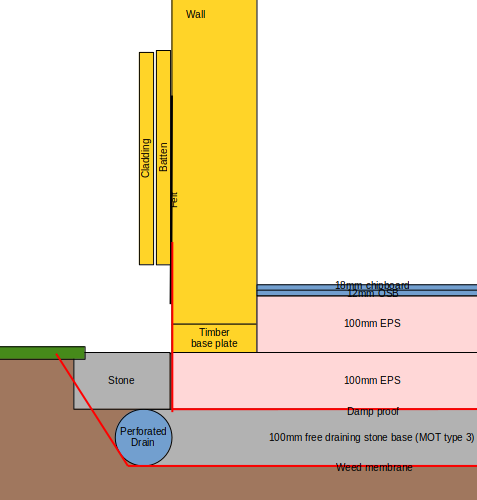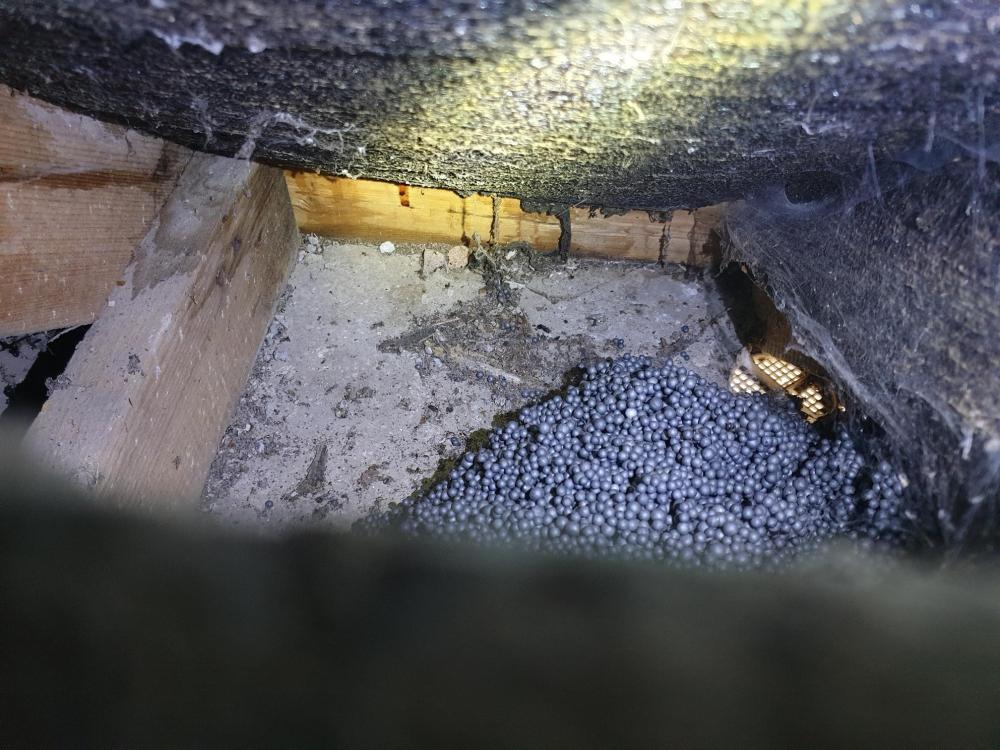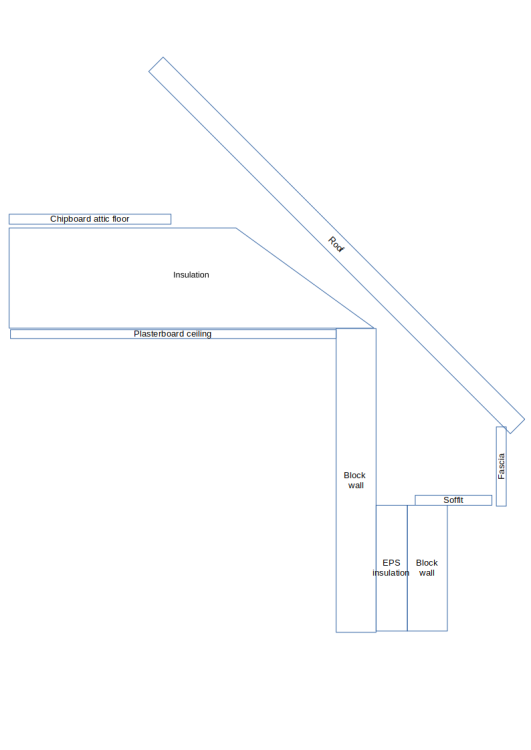
sam
Members-
Posts
50 -
Joined
-
Last visited
Personal Information
-
Location
Devon
Recent Profile Visitors
The recent visitors block is disabled and is not being shown to other users.
sam's Achievements

Member (3/5)
8
Reputation
-
I agree with your calculations but straw is a by product. Until recently often a waste product. The primary crop is the wheat (or other cereal). The observation that solar panels are more effective, by land area, use of land than growing biomass to burn for electricity is unsurprising. They are also significantly more capital intensive. Drax is another interesting comparison because the wood harvested is often from land which would be difficult to use for other purposes, such as solar. Although the reality of important biomass from North America is questionable. The potential to capture the co2 and be carbon negative adds another dimension. Straw is plentiful and produced near house building areas so an interesting building material to explore.
-
Sleaford Renewable Energy Plant is a straw-fired plant, I think the largest in the UK. 240 thousand tonnes of straw per year produces 38MW.
-
Wholesale prices are currently below £100/Kwp for really big projects. Pricing depends somewhat on which parts of China you want them to be made in as many of the larger buyers are restricted by their ESG rules.
-
Thanks all - some really interesting points. The building will be an insulated garden room - for a garden office or children's play room. Building control would not be required. I can get a digger on site but not ready-mix concrete. It is on a slope, but I don't that overly relevant for this discussion. A suspended floor design (on pads or ground screws) would be the simpler solution and is what I designed and got approved for my planning permission (in order to be taller than permitted development allows). For aesthetic reasons I'm keen not to bring the building up higher than I need to, hence exploring other options. I come on this forum because the wisdom should put my mind at rest that I've tried and failed to find a better solution or to give me the confidence to proceed! My question is also partly theoretical. I'm aware of 'passive foundation' designs (diagram below) which are very similar to my diagram above but with the addition of a reinforced concrete slab above the insulation - even if access was easy is this necessary? It adds rigidity to the base of the the building (preventing lateral movement but I don't feel this to be an issue) and adds mass (reducing rocking/lifting, which might be an issue). I am concerned by the lifting/rocking issue. I don't think the increased rigidity of this concrete slab would help, as the weight would still be on a point if it rocked. It would add mass but only about 6 tonnes if 100mm thick - so not sure it would substantially change the situation.
-
I've read what I can on this and did ask on the forum some years back but shall now try on my own thread. I want to build a smallish (c. 4 metre square) garden room, single story and timber construction. This style of building is often built without conventional foundations, maybe on 'shed base' or paving slabs. I'm curious about the following design which has no concrete. I’ve consider the potential issues with this design which might not be present with conventional foundations, a passive slabs or a suspended floor. I've identified the following potential issues: The floor is unsupported: This is a somewhat standard floating floor arrangement and might have a little bit of a spring to it. The EPS under the walls could be compressed: It takes 45kn/sqm to compress EPS100 1%. The 145mm wide base plate around the perimeter has a surface area of 2.2sqm so if the building weighed 10 tonnes this would reach that level of pressure and compress the 100mm EPS to 99mm. I think the whole building will be significantly lighter than this. I know passive slabs often specify higher grade EPS but that would seem unnecessary for a light weight building. The walls could distort laterally: This is the same as a timber frame building on dwarf brick walls. Additionally the top EPS layer would prevent the walls moving inwards. If this was considered a risk the walls could be fixed to the flooring or the base plate could be connected to a strap between the EPS layers. Am I missing something - why wouldn’t this be a good idea?
-
Insulated Concrete Slab Garden Office - Questions
sam replied to Ticky's topic in Garages & Workshops
In the context of a small single story lightweight timber frame and lightweight roof, what would be the purpose of the concrete ring beam? I note viking-house have many examples where the ring beam is separated from the floor slab. I also like Moonshine's suggest of flooring directly onto insulation. I'm wondering if it would be possible to put the timber frame directly onto EPS and do without any concrete. -
How to go about a refund from builder?
sam replied to johnhenstock83's topic in General Self Build & DIY Discussion
Do consider what happens after you win the court claim. You need a real address for the defendant and he needs to be able to pay you. Bad builders often aren't rich. I'd pay land registry £3 to see if he owns his house before starting on a court case. I learnt the hard way. You don't want to throw good money after bad. -
How to retrofit insulation at intersection of cavity and ceiling
sam replied to sam's topic in Heat Insulation
Thanks for the suggestions. I came to discover the issue as I intended to improve the ventilation into the attic, so agree that I need to address these together. -
When I put my gshp in the rhi helped the decision. You would have to do the sums now. In response to the earlier post, you should get the same cop all year if the system is sized appropriately. My kensa says (on the display when it's running) it gives cop of >5 for heating (38 degrees) and >3 for dhw. How does that compare to a new ashp? Noise is slightly worse than the freezer.
-
My 1950s block-cavity-block two story house had EPS beads injected into the cavity. I've recently discovered that the outer wall is c. 400mm shorter than the inner wall and the cavity is open to the eaves void and the loft. This means that the top of the wall is not insulated. Is this common? Any suggestions for insulating this area? The gap between the inner wall and the roof is small (c. 50mm), meaning it's hard to access this area.
-
I thought I'd find this with an easy search but I've not managed to find anything useful here or otherwise online. What are the advantages and disadvantages of using Eaves Felt (5U) vs using Felt Support Trays? Eaves Felt is slightly cheaper (c. £25 for 16m) than cheap Felt Support Trays (c. £2 for 1.5m minus overlap). There appear to be much more expensive Felt Support Trays but I can't see anything obviously better about these. My question is general but for context or if there is anything specific I should consider, I'm roofing a steep (45 degree) garage roof using fibre cement slate tiles and a breatherable membrane (135gsm Cromer Vent 3).
-
It becomes even more complex if you have off-peak (e7) electricity as well! Do you set the heat pump to come on in the day when there might be solar generation or in the night when electricity is half the price?
-
I stand corrected - this is in the FAQs for RHI. I cannot find the actual legal terms and am curious how this is detailed. I know I'm being pedantic, but to comply with this an applicant would appear to need an EPC produced after the heat pump was installed!
-
Subsidies are designed to incentivise behaviour rather than to be inherently fair or logical. In your example the RHI has encouraged the installation of a heat pump which may not have been installed otherwise. The other option may have been to install an oil boiler and not improve the insulation at all. I believe it to be legitimate under the OFGEM rules and not fraudulent. The requirement to install basic insulation (eg cavity wall insulation) before hand and to cap the total KWHs go some way to prevent the most extreme 'playing the system'. A related but different example: it would be ridiculous if you were obliged to pay back (or stop receiving the RHI) if you were to improve insulation after the RHI claim (i.e. during the 7 years) as this would disincentives later insulation.
-
No. The RHI payment is based on the EPC but the system is sized based on the MCS calculations. I believe that it is quite legitimate to improve the building (eg new windows) between the EPC and MCS.






